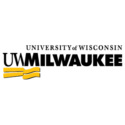![]() For 19 years JBHE has collected black student admissions data on the highest-ranked liberal arts colleges. Over this long period, there have been seven years when Amherst College reported the highest percentage of black freshmen. In fact, Amherst has led the rankings for the past five years. On five occasions, Wesleyan University in Middletown, Connecticut, had enrolled the highest percentage of Black first-year students. Williams College has also been a consistent performer in attracting a large group of Black first-year students. Last year, Williams tied Amherst for first place.
For 19 years JBHE has collected black student admissions data on the highest-ranked liberal arts colleges. Over this long period, there have been seven years when Amherst College reported the highest percentage of black freshmen. In fact, Amherst has led the rankings for the past five years. On five occasions, Wesleyan University in Middletown, Connecticut, had enrolled the highest percentage of Black first-year students. Williams College has also been a consistent performer in attracting a large group of Black first-year students. Last year, Williams tied Amherst for first place.
Wesleyan University, which as stated, has led our ranking on five occasions had slipped in the standings for several years. But this year Wesleyan is back at the top. There are 85 Black freshmen at the college this year and they make up 11.3 percent of the entering class at Wesleyan.

Williams College has been a consistent performer and this year is no exception. There are 59 Black first-year students at Williams this year. Despite a drop in the number of entering Black students from a year ago, Williams ranks second in our survey with a freshman class that is 10.8 percent Black.
Vassar College in Poughkeepsie, New York, ranks in third place with a first-year class that is 10.5 percent Black. This is the highest ranking for Vassar College in the 19 years of the JBHE survey. There are 69 Black students in the entering class at Vassar, up 13 percent from a year ago.
Amherst College, which has led our survey for the past five years, drops to fourth place this year. There are 48 Black freshmen at the Massachusetts college. They make up 10.3 percent of the entering class.
At all of the other leading liberal arts colleges in our survey, Blacks make up less than 10 percent of all students in the first year class.
A Note on Methodology
Before we continue with the results, it is important to mention a change in the way that the U.S. Department of Education collects data on the race of undergraduates. In the past students who reported more than one race (including African American) were included in the figures for Black students. This is no longer the case. Thus, students who self-identify as biracial or multiracial with some level of African heritage are no longer classified as Black. JBHE surveys have always asked respondents to include all students who self-identify as having African heritage including those who are actually from Africa. So we can compare our current data to past JBHE surveys we have continued to asked colleges and universities to include all students who identify themselves as having African heritage.
However, some colleges and universities do not want to publish a different set of statistics than those that appear in official U.S. Department of Education assessments. As a result, some of the colleges have reported data that is consistent with the new Department of Education reporting requirements. Therefore, some of these schools may show a large drop in Black students. For example, Claremont McKenna College reports a dramatic drop in Black students this year. But a significant part of this drop is due to the college’s decision to report only data that is consistent with the U.S. Department of Education data. Other colleges who are insistent on reporting only data that is compatible with the Department of Education reporting requirements are reluctant to report data to JBHE because their numbers will be lower than colleges and universities that include biracial and multiracial students with African heritage in their figures.
JBHE has always maintained that biracial, multiracial, and Black students from Africa add to the diversity of a college campus. And including these students in our figures offers college-bound Black students a better idea of what they can expect at a given college or university. We admit that it is a difficult issue and we understand both points of view. Perhaps, the best solution would be to expand our survey to include both sets of figures. We invite readers to comment.
Back to the Numbers
Haverford College ranked in fifth place in this year’s survey with a freshman class that is 9.3 percent Black. Close behind in sixth place was Bryn Mawr with an entering class in which Black students make up 9 percent of the total. The only other leading liberals arts colleges where Blacks make up at least 8 percent of all entering students are Oberlin College, Smith College, and Swarthmore College.

Liberal Arts Colleges: Short-Term Gainers
Now we turn to a comparison of this year’s results with the data from last year. Here, we again caution readers that some of the numbers may be impacted by a college’s decision to report only students who self-identified as Black only and to omit those students who self-identified as Black and one or more other races. For the 25 colleges for which we have data, 12 colleges posted gains over last year in black enrollments. Hamilton College in Clinton, New York, showed an increase from 15 Black entering students in 2011 to 24 this year, an increase of 60 percent. Smith College reported a significant increase of 40 percent. Wellesley College, Davidson College, and Lafayette College showed increases of more than 20 percent.
Black Acceptance Rates at Liberal Arts Colleges
This year we have acceptance rate data for all but one of the high-ranking liberal arts colleges in our survey. Only Swarthmore College declined to release information on the college’s Black student acceptance rate. Swarthmore College had always reported this data in the past. For example, a year ago, Swarthmore reported a Black student acceptance rate of 27 percent compared to an overall acceptance rate of 15 percent.
Interestingly, for the first time in the history of the JBHE survey of liberal arts colleges, more responding colleges had a lower acceptance rate for Black students than their overall acceptance rate than the number of colleges that had a Black acceptance rate that was higher than their overall rate.
At 11 of the 24 high-ranking liberal arts colleges for which we have data, the Black acceptance rate was higher than the acceptance rate for non-Black applicants. In some cases the differences were very large. For example, at Amherst College 32.5 percent of Black applicants were admitted compared to 13 percent of all applicants to the college. At Williams, the Black acceptance rate of 39.9 percent is more than double the rate for all Williams students, which stood at 17 percent.
At 13 of the 24 high-ranking liberals arts colleges for which we have data, the Black acceptance rate was lower than the rate for all students. At some the differences were substantial. At Lafayette College in Easton, Pennsylvania, 34.5 percent of all applicants were admitted. But only 17.6 percent of Black applicants received notices of acceptance. At Bucknell University in Lewisburg, Pennsylvania, 27 percent of all students were accepted but only 16.3 percent of Black students were admitted.
While no conclusions can be made from one year’s figures, the fact that for the first time in the history of our survey there are more colleges with overall acceptance rates that are higher than Black acceptance rates, causes one to wonder if there has been some curtailment in colleges’ consideration of race in admissions decisions.
For the second year in a row, the highest black student yield among the leading liberal arts colleges in our survey belongs to Barnard College. Forty-four of the 97 black students accepted at the college decided to enroll. Bucknell University was a close second with a Black student yield of 45.3 percent. The only other high-ranking liberal arts colleges with a black student yield of more than 40 percent are Washington and Lee University in Lexington, Virginia, Lafayette College, and Davidson College in North Carolina.
The high-ranking liberal arts colleges with a Black student yield below 30 percent are Harvey Mudd College in California, Swarthmore College in suburban Philadelphia, Trinity College in Hartford, Connecticut, and Amherst College in Massachusetts.











I agree with the new Dept. of Ed reporting requirements. As a teacher who works at an urban high school that serves the poor, I’d like to see more American colleges doing outreach to the black children in the underclass that are the descendants of slaves. So many of the “black” students at colleges are not the descendants of slaves. Their families came from elsewhere. It is the children of slaves that are still languishing in America at the bottom. That’s the only way we’ll stop the cycle of generation to generation poverty. Start a seed and feed program by offering some free summer enrichment programs to urban middle or high schoolers. Some of those kids are smart, too. They just don’t get the opportunities to grow their talent.
Agreed with poster above regarding descendants of African slaves.
I applaud all the schools who are making progress in their recrutment efforts for African American students. I am most interested in several areas: how were their marketing and recruitment plans changed (if they were) to be more attractive to these students, what types of programs (both academic, social, cultural, environmental) are/were put into place on these campuses for these students (especially the school that brought in @85 in the new class!) Is there information from JBHE (or others) on the persistence of these students at schools mentioned in the article or others? Thank you!
The vast majority of these schools have very high Black student persistence and graduation rates. Many have large endowments that allow for attractive financial aid packages that contribute a great to deal to high persistence and graduation rates. Many of them have partnerships with organizations such as Questbridge and the Posse Foundation that bring low-income students to campus and many of these students are members of minority groups.